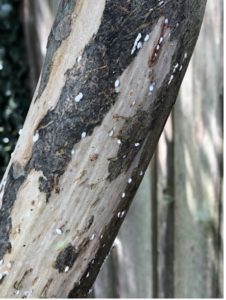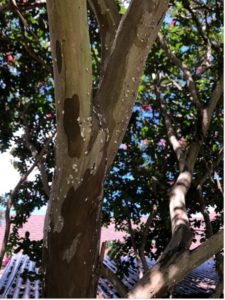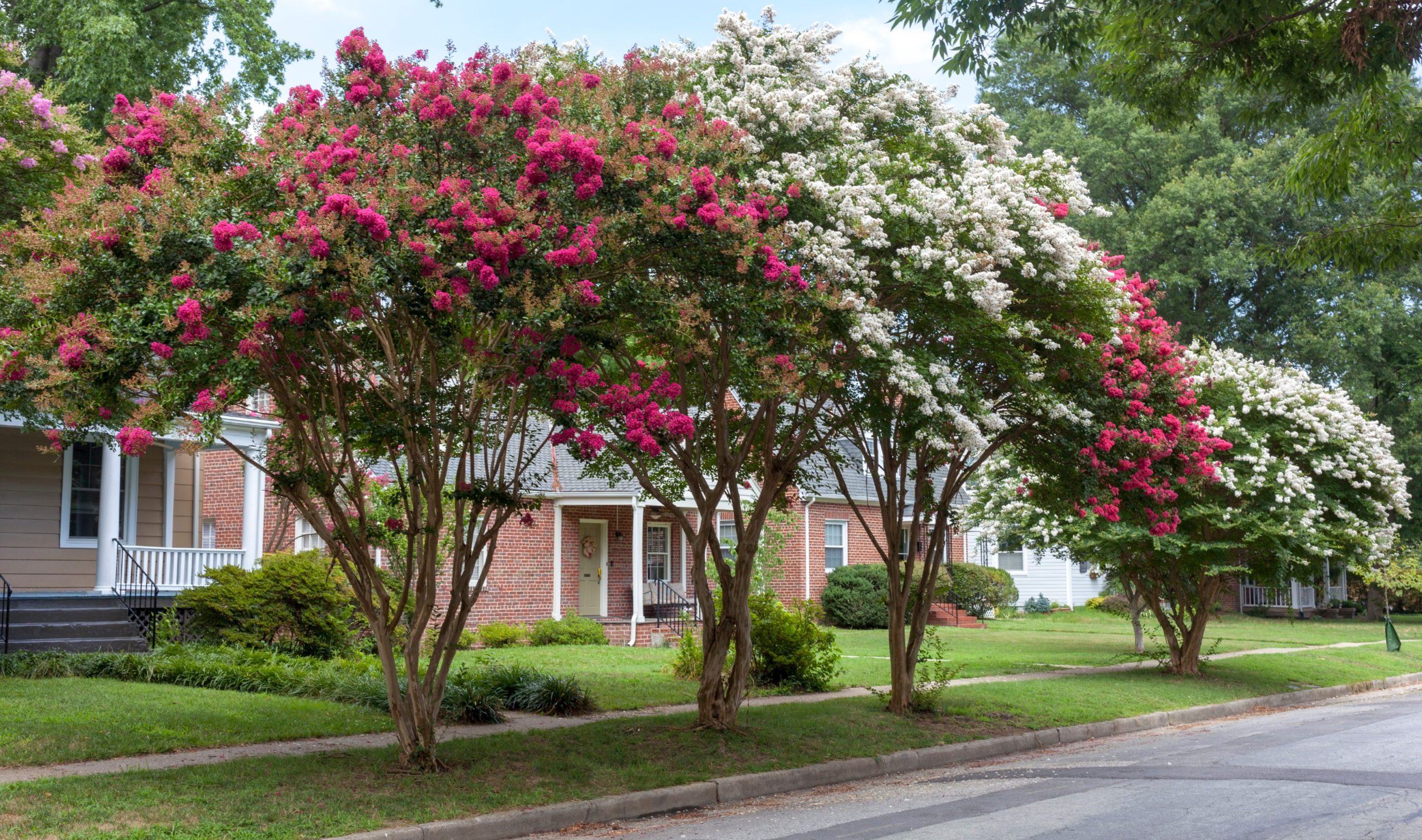One of the most beautiful trees that consistently provides us with flowers throughout our hot summers is the crape myrtle. These trees are prized for their ease of care, disease resistance, long lasting blooms, and the different colors to choose from. They are generally multi-trunked with a smooth and attractive bark. Even better crape myrtles are heat, drought, and humidity tolerant. Crape myrtles come in a variety of sizes and colors so there are great choices for every commercial property and residential home. No wonder it’s a huge favorite throughout the Southern states.
There are two types of crape myrtle trees, Lagerstroemia indica and Lagerstroemia hybrid. The first variety, L. indica has small round leaves and is prone to powdery mildew, which if not treated causes the leaves to curl and distort, interrupts the trees’ photosynthesis, and can appear on the trees in the spring and fall. Powdery mildew is treated with fungicides and generally multiple treatments must be applied to effectively eradicate the disease. For this reason, by far the most popular variety is the L. hybrid which has larger leaves and is not prone to powdery mildew.
These are some of the most popular hybrid varieties:
- Arapaho – 20-30’ – true red flower – maroon tinged leaves
- Fantasy – 25-40’ – white flower, fragrance emits a sweet nectar for bees, cinnamon colored trunk
- Natchez – to 30’ – white flower – cinnamon colored trunk – yellow to red to orange fall color
- Muskogee – to 30’ – light lavender flower – red orange fall color
- Tuscarora – to 20’ – dark coral pink flower – red orange fall color
Remember, the crape myrtle is a tree, so the planting and surrounding areas need to be taken into consideration as you choose a variety. If you do not have the space for the more popular hybrids, try one of the shrub or dwarf varieties.
- Acoma – 6-10’ – white flowers – semi- dwarf weeping habit
- Catawba – 8-10’ – violet purple – dense shrub
- Chica – 2-4’ shrub – deep red
- Chickasaw – 1-3’ shrub – light lavender pink
- Dynamite – 6-8’ dense shrub – true red
- Hopi – 5-10’ large shrub – clear light pink
- Pokomoke – 3-5’ shrub – deep rose pink
Crape myrtles need at least 6 hours of direct sunlight to produce the long-lasting summer flower blooms. In the right conditions, the trees can grow 24” and more annually. Also, their root systems are not invasive.
In the past, it was common practice to prune crape myrtle trunks to remove the flowering seed heads. Since there are so many seed heads and hand pruning is time consuming, the pruning was accomplished by having all the trunks cut to shoulder or waist height. There is no reason to prune a crape myrtle to this extent unless trying to lower the height of the tree, which would indicate the wrong variety was planted. Routinely pruning the trunks to shoulder or waist height has been nicknamed “crape murder” because over time this pruning will ruin the tree. If your crape myrtles have been cut to this height over time, you may be best served by removing the trees and starting again. They will never look as good as they can.
Recently, you may have noticed, on some crape myrtles, a black sooty mold on the usually light-colored bark. This is the result of a new, exotic pest that is known to infest crape myrtles thought to have come from Asia. The disease is called Crape Myrtle Bark Scale (CMBS). It is caused by a small insect called a scale. They are felt-like white or gray encrustations that stick to the crape myrtle bark. If you crush one, a somewhat pink “blood” will come out. They are small, their length is about the width of a dime.
The black sooty mold is a product of the scale producing excessive honeydew deposits which results in the growth of the mold. While it is quite unsightly, the good news is it is not fatal to the tree. While not fatal, it can negatively affect the tree’s strength, and reduce the number and clusters of blooms. If you see CMBS, it’s important that it is treated, it will only get worse.
There have been numerous tests on effective ways to treat the scale, however CMBS is still relatively new so not a lot is known. If the tree is heavily infected, wash the trunks and limbs with a soft brush and mild solution of dishwashing detergent. This will remove most of the black mold and wash away many of the scale egg masses. Horticultural oil has not shown success when the scale is visible and may have some benefit if applied in the winter. Systemic insecticides have exhibited much better results at addressing the issue. These are applied to the root zone through a soil injection or a drench. A drench is applying the liquid insecticide by a bucket watering the tree well. Always, always follow the label instructions regarding mixing and disposing. It will take several weeks for the tree to absorb the insecticide. If any of the crape myrtles on your property have CMBS, give your professional landscaper a call and they’ll be able to provide a treatment that will allow those trees to make your property shine!


To learn more, try this resource:
https://agrilife.org/citybugstest/files/2010/05/EHT-049-Crape-myrtle-bark-scale.pdf



